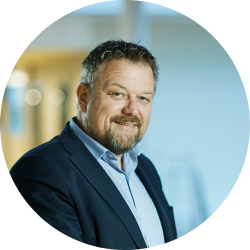Data visualization tools are leveraged to gain insights into providing care to patients from different groups, enabling teams to examine patient flows across various categories and monitor metrics to enhance the process consistently. While these initiatives have helped mitigate burnout, the Nordic health system still requires a comprehensive action plan to address the challenges posed by the post-pandemic landscape.
The future of the Nordic care model
1) Purposeful data collection
To enhance patient care and outcomes, health systems need to provide frontline clinicians with actionable data insights about specific patient populations. Clinicians need adequate training and support to interpret the data effectively. They spend most of their day collecting data but don’t have the bandwidth to analyze it. By providing clinicians with analytic insights, health systems can improve patient care and experience, and bridge the gap between data collection and its effective use in clinical decision-making.
2) Talent strategy and new roles for future care models
Health care organizations must prioritize upskilling their workforce and equip them with the necessary digital tools and expertise to deliver quality patient care. Data analysis, integration, interoperability, health cloud operation, augmented reality (AR)/virtual reality (VR) implementation and data security will be crucial skills for the health care workforce. To support the shift toward new digitally enabled care models, talent strategies should focus on nurturing and developing these skills in the workforce.
3) More autonomy in managing patients
Health care organizations should focus on enabling clinicians to have more control over their patient panels, allowing them to provide personalized care and improve patient outcomes. Optimizing workflows to add more time to engage with and care for existing patients, rather than adding more patients to their load, is crucial.
To strengthen relationships with patients and improve patient care, it is imperative to provide clinicians with greater autonomy in managing their patient panels.
4) Reset the traditional care models
Traditional models that rely on the sacrifice of clinicians through endless shifts, charting on their own time and being always on call need a reset. The current generation values a healthy work-life balance, and health care organizations should take steps to address this.
One way to alleviate the burden on clinicians is through virtual triage and virtual primary care, which can help route patients away from overwhelmed sites. To improve the quality of care and incentivize primary care practitioners, health care organizations should expand incentives and remove barriers, enabling them to deliver quality patient care while maintaining a healthy work-life balance.
5) Digitally equipped care models
Digital tools designed with and for clinicians are needed to alleviate their burden, not add to it. Such tools should empower patients to take charge of their own care. To achieve this, policymakers and governments must eliminate unnecessary regulations that create a burden on clinicians. Health care organizations must optimize their policies to prioritize patient-clinician time and minimize administrative tasks that take away from patient care. By doing so, health care organizations can help clinicians focus on what they do best — providing quality patient care.
6) The feedback loop
In any health care process or model, a feedback loop is crucial to ensure its effectiveness, particularly when implementing a new model. Monitoring and optimizing the process is essential, and this can only be achieved by collecting feedback from clinicians and analyzing it. By doing so, health care organizations can ensure that patients receive adequate attention while physicians are not overwhelmed or burnt out. The feedback loop is essential to maintain a balance between patient care and physician workload, and it should be an integral part of any health care model.
Considering the current workforce shortages, it is an imperative for health care organizations in the Nordics to adopt a new care model. This will enable them to address the challenges the post-pandemic landscape poses effectively. Large organizations have a unique opportunity to lead the way by modernizing their approach and rebuilding the Nordic care model. By doing so, they can equip themselves to tackle future circumstances without overburdening their workforce.



